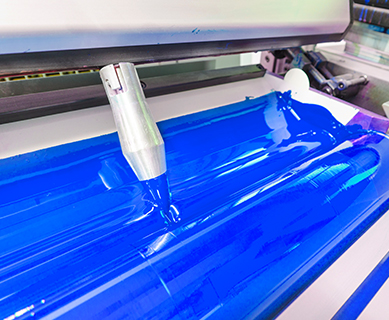How To Disperse Pigments Effectively?
Introduction to dispersibility of pigments
Pigments are insoluble particles that are produced and created to impart colors to materials. Also known as colorants, they are mostly divided into two types – organic and inorganic.
Pigments must be properly wetted, de-agglomerated or dispersed, uniformly distributed, and stabilized to attain proper color intensity, hiding power, and gloss. It requires time and energy to stabilize pigment dispersion.
Colorants already dispersed have a strong need to return to their original agglomerated state. This strong need makes it important to select a proper wetting and dispersing agent to obtain a stable formula.
Wetting additives or surfactants, normally known as amphiphilic chemistries, have a low molecular weight whereas dispersing additives or oligomers stabilize the colorants. This stabilization avoids re-agglomeration.
How to disperse and stabilize pigments in three steps
Wetting
For a pigment to wet properly, you must exchange the air/solid interface for a liquid/solid one. The wetting will be more effective if there is less air entrapped in the system. So, you understand that it is all about surface tension. The surface tension must be lower for a liquid to wet a solid.
Thus, liquids with a lower surface tension are more effective in wetting, which is why wetting additives are so vital to the formulator. Wetting additives reduce the surface tension, thus adhering to the surface and coating the pigment to produce a liquid interface.
Commonly, solvent-based systems wet a colorant more owing to their lower surface tension of solvents when compared with water with higher surface tension. Dhanveen Pigments, one of the largest manufacturers of pigment green 7, gives the best dispersant.
Deagglomeration
In the deagglomeration phase of the dispersion process, the pigment agglomerates are divided into primary particles and smaller aggregates. The lesser the surface tension of the vehicle in which the colorant is being integrated, the lesser energy will be required to disperse the pigment. The deagglomeration phase is attained by using mechanical energy developed through high-speed dispersers and other grinding equipment.
The shaft of a high-speed mixer fitted with a Cowles blade effectively disperses a colorant. Cowles blades with high shear blades are excellent for the dispersion of pigments. Other varieties of blades, such as a combination blade or high vane blade, can also be utilized depending on the viscosity of the dispersion. Also, it depends on the need to blend or move the raw materials during the processing.
To achieve a good laminar flow and enhance the efficiency of dispersion, it is suggested that the diameter of the blade be 1/3rd of the tank diameter. Also, the blade should be 0.5 to 1.0 diameters off the tank's bottom. It is generally suggested that the tip speed for a system between the viscosity of 70-100 Krebs unit should be around 4000-6000 fpm. You can use the equation – Shaft RPM x 0.262 x blade diameter to determine the speed of the tip. Pigments with a hard texture can be dispersed finely using a media mill. It creates considerably more shear, such as vertical, horizontal, and basket mills. If you want to disperse the colorant to a nano level, it is suggested to use 0.3-0.5 grinding media.
Stabilization
The pigment that is now deagglomerated needs to be stabilized to prevent it from re-agglomeration. In the stabilization process, dispersants are added that will be absorbed by the pigment particles and keep them detached. Mostly, this is how the dispersion of pigments in plastics takes place.
Pigments in suspension can be stabilized either - electrostatically or sterically.
Electrostatic Dispersants
Electrostatic dispersants have an ionic charge in them. Interaction with the colorant’s surface helps to create like-charged surfaces, typically cationic. The like charges on the surface of the particles repel each other, thereby keeping the pigment in a stable suspension. However, adding ionic material and changes in the pH level can reduce the stability of particles suspended with electrostatic dispersants.
Steric Dispersants
They are made of molecules consisting of an anchoring head group attracted to the pigment particles and tails towards the liquid phase of the dispersion. Steric stabilization is unbelievably stable over a wide pH range and at high salt concentrations.
Pigment Wetting Agents & Dispersants: Why are they Important?
In most cases, the most expensive ingredient in paints, ink, or coating formulation are pigments. Optimizing pigment wetting and dispersion in the formulation is important to ensure optimal appearances and physical properties. When you choose the correct dispersant and wetting agent for the formulation, it produces high-quality inks, coatings, and paints, while the cost of production to a minimum. When you choose Dhanveen Pigments, one of the largest pigment green 7 manufacturer, you can produce high-quality products.
When pigments are dry, they are in the form of large agglomerates in a wide range of sizes. By dispersing them in a liquid medium, energy is given to the agglomerates to lessen their size to aggregates and lessen the range of aggregate sizes. This helps in various ways, such as –
- In a homogenous suspension, dispersion provides stability to particles.
- It stops the particles from settling in a liquid medium.
- It enhances the efficiency of colors.
- It helps in creating reproducible and predictable colors.
Pigments play a major role in formulating and tinting plastics and coatings and play a vital role in their performance; it is thus important to know their dispersion method.
check our blog Applications of pigments to gain a deeper knowledge about their use and applications.




